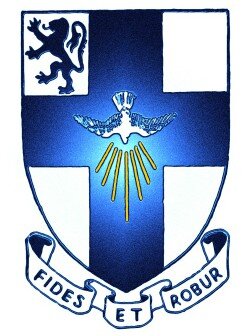Religion
In the light of the “Mission and Ethos Statement” and the “School Pastoral Care and Guidance Policy”, the RE programme in Willow First Year strives to deepen students’ understanding of what it means to be Christian, Catholic, Spiritan. As an exam subject, the RE Programme also focuses on the related objectives and key concepts of the following sections of the Religious Education Junior Certificate Syllabus in this regard.
Community Section A
Christianity Section B
World Religions Section C
Morality Section F
Characteristics of community
Module One: Belonging and Integrating.
Topic: Joining a new group Theme: What is community?
* Definition of “community” and identification by students of communities to which they belong. Students identify their core communities. * Students identify and discuss the attributes of a thriving and positive community <
Theme: Basic Human Needs (with special emphasis on the need to be safe) *
Maslow’s Pyramid explained and discussed In studying the pyramid – bullying is stressed as a violation of a person’s basic need for safety
Theme: The human need to be in relationship with others (community) * Selected scenes from the film “Castaway” actively watched. Students identify, write down and share with the class ~ the numerous verbal/non-verbal attempts by the main character to connect with others ~ the significance of having a friend- someone to talk to (‘Wilson’) in maintaining good mental health ~ the importance of having a meaning/ purpose in our lives (the unopened package) Stories such as ‘The Wild Boy of Aveyron’ (“Know The Way”pg. 10) are also explored to examine the need to belong to a community in developing one’s full potential.
Theme: Core Communities Course content: The Benefits, Roles and Rules and Complex Relationships of the core communities of family, school and friends are explored. The potential tension between the individual’s need and the needs of the family also explored.
Theme: World Religions (an introduction) Students begin an exploration of the expression of belief in different cultures throughout the world <
Halloween and/or (Post Exams) Projects on the theme of Christmas Students identify their academic strengths and decide on the format their projects will take depending on their strengths. Students are provided with the following list of options to choose from (they can alternatively make a proposal to add to this list) Projects are submitted to the class. (a powerpoint presentation, artistic presentation, historical piece, creative writing piece) on the theme of eg. Christmas History of Santa, Christmas Tree, Carols, Crib, Christmas Morning, Celebration of Christmas in different countries/ cultures etc.) Students present their projects to the class (building confidence and self-esteem) Students openly evaluate their own and each other’s work (based on the clearly-explained understanding that they analyse honestly, but with sensitivity and respect, the work and not the person (see Class Rules) Powerpoint presentations are put on the school web-site Preparation for, and evaluation of projects for Catholic Schools’ Week
Christology (the life and times of Jesus of Nazareth)
The basic ideology behind this module based on that of Thomas Groome’s Shared Christian praxis model of teaching religion (and indeed prayer) and echoes the “The Experiential Learning Cycle
*(see appendix 1) Basically, through reflecting on the Christian Story (in this case the experiences and feelings of Jesus) students, through very structured group work, recognise their own sstory (in this case their own experiences and feelings)and make a response to this (through eg. evaluation) Students assess their own and each other’s work (Peer Assessment) in the light of Class Rules In groups of up to 4, students are provided with a number of gospel passages relating to specific experiences of Jesus and the corresponding feelings (including being angry, misunderstood, bullied, brave etc.) Students prepare a display of projects on these themes. Projects are put on display in the school. Students read and evaluate each other’s work (see handout ‘Catholic Schools’ Week’). Students write a review of the projects, (focusing in particular, on any new insights they gained into the feelings of Jesus).
February – March
World Religions: Celebrating Difference
* Students present group projects on the founders, sacred writings, beliefs, moral teachings, sacred times and ritual of each of the major world religions.
* This project work, though similar to previous projects, has an added dimension. In this project students are required to put themselves in the shoes of someone of another faith. Not only must they present their religion, they must also answer questions on their religion
* The students design exam questions based on their projects, (these will be form the basis of the World Religions Question on the Religion Summer Exam)
* In this peer-teaching environment, students are required to listen to each other, and to ask questions.
* Where possible, students will research and organise visits to local mosque/synagogue and will be required to invite guest speakers of different religious persuasions into their class
* At the conclusion of this module, students could explore the possibility of nominating members of their group to give a talk to parents entitled “The Human Experience of God
April - May
Influences and Decisions Topic My Heroes Course Content: An introduction to Morality *
Students identify both individually and in groups, their heroes and the qualities that s/he possesses * Students identify the influences in their own lives
* Students brainstorm the term “morality”
* Students are presented with a number of situations in life where decisions need to be made. A distinction is drawn between a “good choice” and a “moral decision”
* In groups, students script and role-play everyday situations requiring “good” or “moral” decisions to be made.
* Students outside the class group need to identify from their peers which decision is being made in each situation.
* Students begin to explore the concept that our actions have consequences, mainly through narrative
